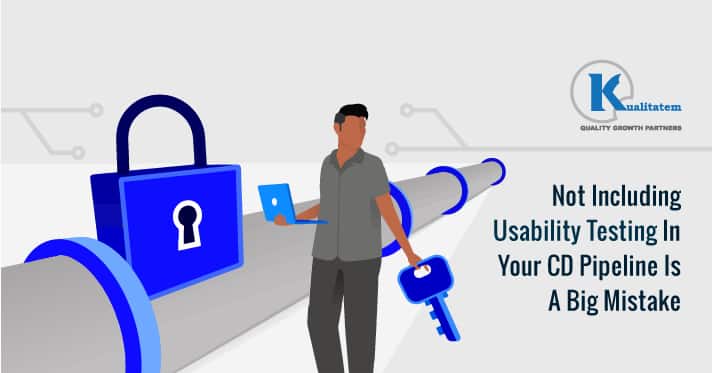Not Including Usability Testing in CD Pipeline Is a Mistake

- February 21, 2019
- HibaSulaiman
Usability testing is a technique used in user-centered interaction design to assess a product by testing it on others. This can be viewed as a unique usability practice. This is because it provides direct input on the ways actual users utilize the system.
The main aim of usability testing is to measure a human-made product’s capacity to meet its envisioned purpose. Examples of products that gain the advantage of usability testing include devices, documents, computer interfaces, web apps or web sites, consumer products, and food. Usability testing measures the ease of use or usability of the set of objects or a particular object. In comparison to this, general human-computer interaction studies aim to form universal principles.
Whereas, a continuous delivery pipeline is an application of the continuous paradigm where automated developments, tests and deployments are arranged as a release workflow. In other words, a continuous pipeline is a complete set of steps your code variation will pass through to make their way to production.
A continuous delivery pipeline delivers according to the business requirements, quality products predictably and frequently from test to staging to production automatically.
Usability testing, which encompasses having real users test an app for accessibility, intuitiveness, user-friendliness, easily gets lost with the DevOps arguments. If you want to implement continuous delivery, a major barrier is like waiting for manual usability tests.
The significance of The Usability Testing
Up till now, DevOps teams that disregard the significance of usability tests do so at their risk. Continuously delivered applications will offer some value if they are problematic for normal people to utilize. Users have some tolerance for apps that lack usability.
It is important to keep in mind that DevOps make usability testing more significant than it would be in the waterfall delivery chain. Your software changes quickly after doing continuous delivery. This increases the probability of introducing a modification into production that undesirably affects app usability.
Methods of DevOps Usability Tests
Now the point to ponder is that you won’t be able to do proper usability testing without decreasing the speed of your continuous delivery pipeline. Unluckily, there is no easy solution. Usability tests are not easy to automate like unit and integration tests.
However, you can perform closely with your in-house QA team. This will assist you to perform usability tests prior to the changes reach the production phase of your pipeline. This will function as long as the QA team is able to replicate actual worlds usability conditions nicely.
On the other hand, you could release variations to a select group of users prior to making them generally available. Those users would then test for usability problems rapidly and report them to you prior to the update reaching the team members. This situation would fundamentally mean doing a very fast beta release for some users. If that seems impracticable, you keep in mind, as long as each of your continuously delivered variations is minor, quick beta testing is controllable.
After viewing the discussion above, it can be said that the most important thing is avoiding to ignore usability testing. Or else, all the hard work you put into continuous delivery of your app will be wasted.











